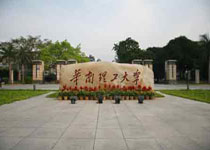Attration Category
Guangzhou Weather

This page describes a mainland Chinese university. For the identically-named Taiwan institution, see Nanhua University.
The University of South China (formerly translated as Nanhua University; ) is a university in Hengyang, China, founded through the merger of its two predecessors: the Central South Institute of Technology and Hengyang Medical College. The University of South China, with a nation-wide enrollment, is co-administered by Commission of Science, Technology and Industry for National Defence and Hunan Provincial Government, with the latter taking more responsibility. It was approved by the Ministry of Education of China in 2000.
In October 2002, University of South China incorporated the Sixth Institute of National Nuclear Industry as its subordinating part and took over No. 415 Hospital (originally under the Corporation of National Nuclear Industry) as one of its affiliated hospitals. In July 2004, the Chinese People's Liberation Army (PLA) Navy set up a training base for its reservist officers in University of South China. The University of South China was initially authorized to award bachelor degrees, and in 1986 began awarding master degrees. In 1991, it began to collaborate with other universities and research institutes in doctoral programs, and was authorized to award doctoral degrees in 2003.
The university has 45 undergraduate majors, covering as many as 8 disciplinary areas (science, engineering, medicine, law, liberal arts, economics, management, and education). There are 6 provincial key disciplines, 5 disciplines administrated by the Chinese government, and 1 key discipline of national defence. 4 Programs are entitled to award Ph. D. degree, 43 MA or M.S. degrees, and 3 professional degrees. The mining engineering, nuclear technology and its application, pathology and pathological physiology, and pharmacology are Hunan provincial key construction disciplines. There are 2 ministerial key laboratories, i.e. the dissolution and mineral laboratory, the coordinating laboratory of the International Radon Calculation Program of IAEA in Asia, 1 provincial key laboratory, i.e. the radon laboratory.


